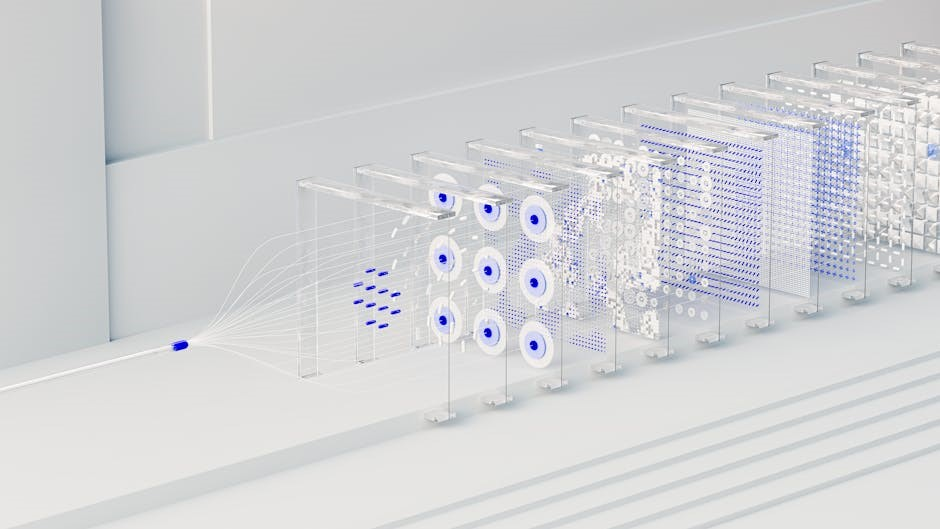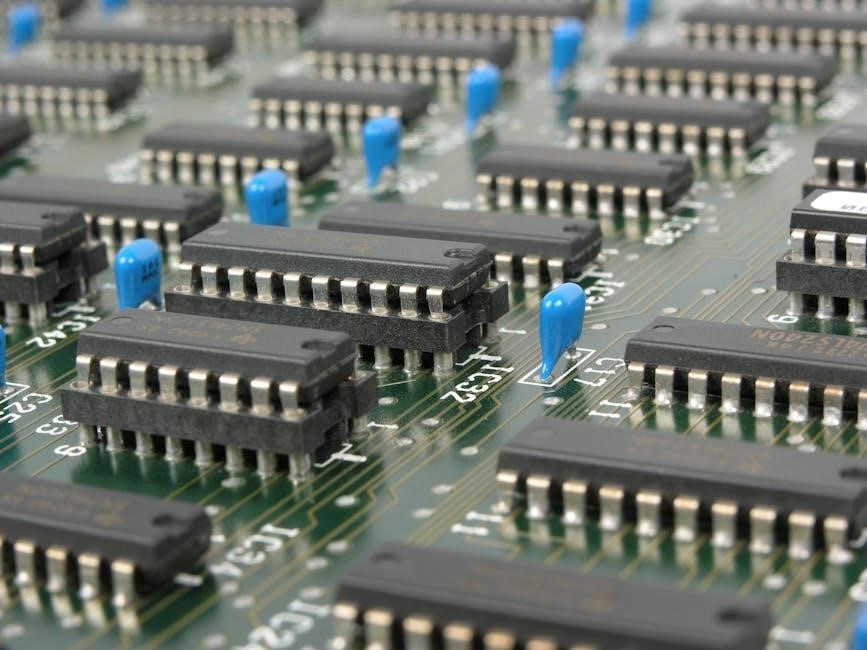The locomotor system, comprising bones, muscles, and connective tissues, enables movement and maintains posture. Its complexity and essential role in human mobility make it a critical area of study.
1.1 Definition and Overview

The locomotor system, also known as the musculoskeletal system, is a complex network of bones, muscles, tendons, ligaments, and connective tissues. It enables movement, maintains posture, and provides structural support to the body. This system is essential for performing daily activities, from walking and running to fine motor tasks. Its components work in harmony to facilitate mobility while absorbing shocks and distributing forces effectively. The locomotor system is vital for overall physical function, and its dysfunction can lead to limitations in movement and quality of life. Understanding its structure and function is crucial for diagnosing and treating related disorders.
1.2 Importance of the Locomotor System in Human Movement
The locomotor system is vital for enabling movement, maintaining posture, and facilitating physical interactions with the environment. It integrates bones, muscles, and connective tissues to provide stability and mobility, essential for daily activities. The system’s efficiency directly impacts quality of life, as impairments can lead to limited mobility and functional disabilities. Understanding its importance is crucial for diagnosing and addressing conditions that affect movement, ensuring optimal physical function and overall well-being.

Components of the Locomotor System

The locomotor system consists of bones, joints, muscles, tendons, and ligaments, working together to facilitate movement, stability, and structural support for the body.
2.1 Bones and Joints
Bones and joints form the structural foundation of the locomotor system, enabling movement and providing stability. Bones act as rigid levers, while joints, classified as synovial, cartilaginous, or fibrous, facilitate motion by allowing articulation. Synovial joints, such as the knee and shoulder, offer the greatest mobility due to their fluid-filled cavities and cartilage-lined surfaces. Proper alignment and health of bones and joints are critical for efficient movement, as abnormalities can lead to impaired function and discomfort. Their intricate design and interplay are essential for supporting the body’s weight and executing complex movements seamlessly.
2.2 Muscles and Tendons
Muscles and tendons are integral to the locomotor system, enabling movement by transmitting forces from muscles to bones. Muscles contract to produce motion, while tendons, tough yet flexible, connect muscles to bones, enhancing strength and stability. This collaboration is vital for voluntary movements, such as walking or lifting, and maintaining posture. The health of these tissues significantly impacts mobility and overall musculoskeletal function, making them a focus in both clinical examinations and rehabilitation strategies to address injuries or disorders affecting movement.
2.3 Ligaments and Their Role
Ligaments are tough, fibrous connective tissues that connect bones to stabilize joints. They prevent excessive movement, ensuring joint integrity and providing structural support. Ligaments differ from muscles as they lack contractile properties, relying on external forces for tension. Their elasticity, due to collagen and elastin fibers, allows limited flexibility while maintaining joint stability. Capsular ligaments surround joints, while accessory ligaments reinforce them. Ligaments play a crucial role in controlling joint movement and preventing injury, making them indispensable to the locomotor system’s functionality and resilience.

Biomechanics of the Locomotor System
Movement patterns and stability are key to understanding locomotor biomechanics. Efficient patterns reduce energy expenditure, while disruptions can lead to poor posture or injury, affecting mobility and balance.
3.1 Mechanical Impedance and Its Significance
Mechanical impedance refers to the resistance of the locomotor system to external forces during movement. It plays a crucial role in maintaining stability and efficiency in motion. Understanding impedance helps in designing prosthetics and bionics that mimic natural movement patterns, reducing energy expenditure and enhancing performance. Research highlights its importance in analyzing how the body adapts to different terrains and dynamics, ensuring optimal functionality. This concept is vital for advancing prosthetic components and bionic legs, enabling smoother integration with the user’s biomechanics.
3.2 Movement Patterns and Stability
Movement patterns in the locomotor system involve the coordinated interaction of bones, muscles, and joints. Stability is achieved through neuromuscular control, ensuring balance during dynamic activities. The system adapts to various terrains and conditions, maintaining posture and preventing excessive movement. Impairments in any component can disrupt these patterns, leading to instability or inefficient motion. Understanding these mechanisms is crucial for rehabilitation and enhancing mobility in individuals with locomotor system disorders.

Clinical Examination of the Locomotor System
A selective clinical process detects locomotor abnormalities and functional disability, proving valuable for systematic examination and effective diagnosis in various mobility-related conditions.

4.1 Detection of Abnormalities
Detection of abnormalities in the locomotor system is crucial for early diagnosis and treatment. A selective clinical examination process can identify key issues, such as limited joint mobility, muscle weakness, or structural damage. This involves assessing movement patterns, muscle strength, and gait. Abnormalities may arise from trauma, aging, or chronic diseases, affecting the system’s functionality. Proper detection ensures timely intervention, preventing further complications. Clinicians use tools like X-rays or MRIs to confirm structural issues, while physical tests evaluate range of motion and muscle function. Early identification of these abnormalities is essential for maintaining mobility and quality of life.
4.2 Functional Disability Assessment
Functional disability assessment evaluates limitations in movement and daily activities due to locomotor system impairments. It involves physical examinations, patient histories, and specific tests to measure mobility, strength, and flexibility. Clinicians assess gait abnormalities, joint range of motion, and muscle function to determine the degree of disability. This process helps identify the impact of conditions like arthritis, injuries, or neurological disorders on an individual’s ability to perform tasks. Accurate assessments guide rehabilitation planning and monitor progress over time, ensuring personalized treatment strategies. The integration of clinical findings with patient-reported outcomes provides a comprehensive understanding of functional limitations.

Applications in Prosthetics and Bionics
Understanding the locomotor system aids in designing prosthetics and bionics, such as shock-absorbing components and bionic legs, to restore natural movement and mobility in individuals.
5.1 Designing Shock-Absorbing Prosthetic Components
Designing shock-absorbing prosthetic components requires understanding the mechanical impedance of the locomotor system. By mimicking natural movement patterns, these components reduce fatigue and stress on the user. Advanced materials and damping systems are utilized to absorb impact, ensuring comfort and stability. Such designs aim to replicate the biomechanical properties of human limbs, improving mobility for individuals with prosthetics. Research emphasizes the importance of integrating these components with bionic technologies to enhance functionality and adaptability in various environments.
5.2 Development of Bionic Legs and Walking Machines
Bionic legs and walking machines are revolutionary advancements inspired by the human locomotor system. These devices integrate sensors and AI to mimic natural movement, offering precise control and adaptability. They are designed to assist individuals with mobility impairments, restoring independence and improving quality of life. Advanced materials and actuators enable lightweight yet durable constructions. Researchers focus on enhancing energy efficiency and user feedback systems. These innovations pave the way for more sophisticated prosthetics and assistive devices, aligning with the growing demand for accessible mobility solutions.

Recent Research and Publications
Recent studies on the locomotor system focus on biomechanics and rehabilitation advancements. Research highlights mechanical impedance in prosthetics and bionic designs, offering insights into improved mobility solutions and treatment outcomes.
6.1 Selected Publications on the Locomotor System
Recent publications highlight advancements in understanding the locomotor system, focusing on mechanical impedance and its role in prosthetics. A study in Clinics explores clinical examination techniques to detect abnormalities. Another article reviews the biomechanics of movement patterns, emphasizing stability in bionic designs. Brazilian journals feature surveys of locomotor system research, showcasing diverse applications in prosthetics and bionics. These publications underscore the system’s complexity and its relevance to modern medical innovations, providing valuable insights for researchers and clinicians alike.
6.2 Advances in Locomotor System Research
Recent research has focused on understanding the mechanical properties of the locomotor system, particularly mechanical impedance, to enhance prosthetic designs. Advances in biomaterials and rehabilitation engineering have led to more efficient bionic legs and walking machines. Studies emphasize the integration of robotics and AI to mimic natural movement patterns. These developments aim to improve mobility for individuals with locomotor impairments, offering personalized solutions. International collaborations have accelerated innovation, paving the way for groundbreaking therapies and assistive devices.
The locomotor system’s intricate design and function are vital for movement and stability, with ongoing research and advancements promising improved prosthetics and enhanced mobility solutions.
7.1 Future Perspectives in Locomotor System Studies
Future research on the locomotor system will focus on advancing prosthetics, bionics, and personalized treatments. Innovations in materials science and AI-driven designs are expected to revolutionize prosthetic components, enhancing mobility and comfort. Additionally, studies on mechanical impedance and movement patterns will improve the development of bionic legs and walking machines. Personalized medicine approaches, tailored to individual biomechanical needs, are also anticipated. These advancements aim to restore natural locomotion in individuals with impairments, promoting independence and quality of life. Continued interdisciplinary collaboration will be key to unlocking these breakthroughs and addressing global health challenges.
